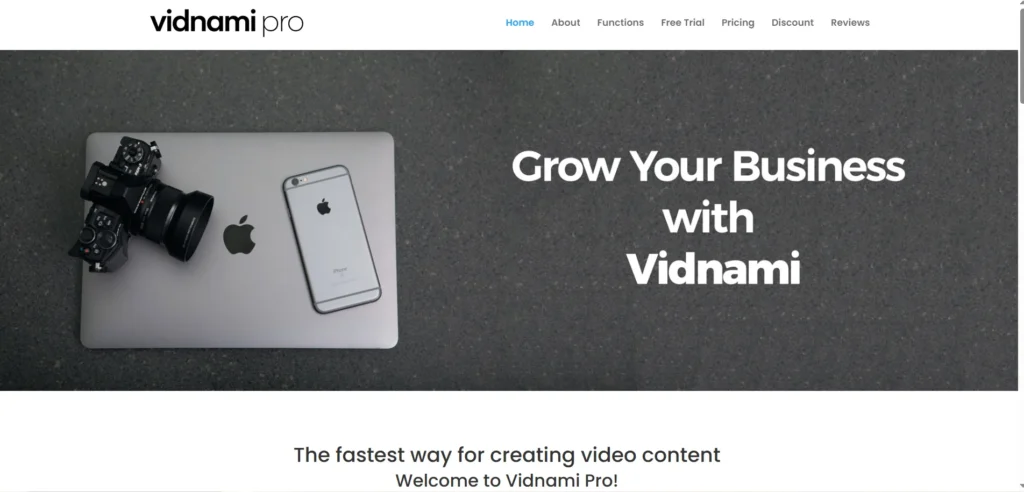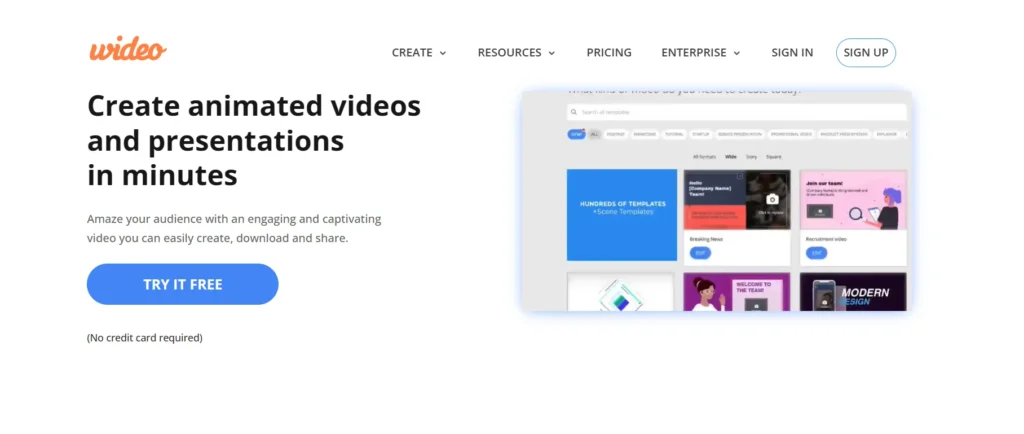Vidnami was a popular online video creation tool designed to help users produce professional-looking videos quickly and easily, even without prior video editing experience. It catered to marketers, educators, content creators, and small business owners who needed to create engaging video content for social media, websites, or presentations. With its automated features and user-friendly interface, Vidnami aimed to simplify the video production process. Although the platform was discontinued in 2021, its features and approach still influence many current tools, making it worth discussing for those exploring similar solutions today.
Is Vidnami Right for You?
Vidnami was particularly well-suited for individuals and small teams who needed to produce video content quickly without investing in complex editing software or hiring professionals. Typical users included digital marketers creating promotional videos, coaches and educators developing online courses, and social media managers producing short-form content for platforms like Facebook, Instagram, or YouTube.
However, Vidnami might have felt too basic for professional video editors or creatives looking for advanced customization, motion graphics, or cinematic effects. Its strength was in speed and simplicity, not in offering the depth of tools found in high-end editing suites like Adobe Premiere Pro or Final Cut Pro.
What It Does Well
- Automated video creation from text scripts
- Large library of stock footage and music
- Text-to-speech voiceovers
- Simple drag-and-drop interface
- Quick turnaround for social media content
One of Vidnami’s standout features was its ability to generate videos from a written script. Users could paste in a block of text, and the platform would automatically match relevant stock footage, add transitions, and even generate a voiceover using AI-powered text-to-speech. This made it incredibly efficient for marketers who needed to turn blog posts or sales copy into video content without starting from scratch.
The built-in media library was another major advantage. With access to thousands of royalty-free video clips, images, and background music tracks, users didn’t need to source assets externally. This was especially helpful for small businesses or solo entrepreneurs who lacked the time or budget to license media separately.
Where It Falls Short
Despite its strengths, Vidnami had some limitations. First, the automated nature of the platform meant that users had limited control over fine-tuning visuals. While the AI did a decent job of matching footage to text, it wasn’t always accurate or contextually appropriate, requiring manual adjustments.
Second, the voiceover options, while convenient, often sounded robotic or lacked emotional nuance. For users creating high-impact brand videos or storytelling content, this could be a drawback. Additionally, the platform didn’t support advanced editing features like keyframing, color grading, or multi-track audio, which might frustrate more experienced creators.
Free vs Paid: What’s the Catch?
Vidnami offered a limited free trial that allowed users to explore its core features, but exporting videos or accessing premium assets typically required a paid subscription. The paid version unlocked full access to the stock media library, higher-quality exports, and additional voiceover options.
For casual users or those testing the platform, the free trial was a good way to evaluate its capabilities. However, anyone planning to use the tool regularly for business or content marketing would likely need the paid version to get the most value. The subscription model was straightforward, but some users felt the pricing was steep compared to other tools with similar offerings.
Are There Alternatives?
- InVideo – Offers similar script-to-video functionality with more customization options
- Lumen5 – Focuses on turning blog posts into videos with a strong emphasis on automation
- Canva Video – A user-friendly tool for simple video editing with a strong design focus
Each of these tools has its own strengths and weaknesses, but they all aim to simplify video creation for non-experts. Depending on your needs, one of these alternatives might offer a better fit, especially since Vidnami is no longer actively supported.
Verdict
Vidnami was a solid choice for users who needed to create videos quickly and without technical expertise. Its automated features, stock media access, and ease of use made it ideal for marketers, educators, and small business owners looking to boost their content output. However, it lacked the depth and flexibility required by professional video editors or creatives seeking full control over their projects.
If you’re someone who values speed and simplicity over granular control, exploring tools inspired by Vidnami’s approach could be worthwhile. On the other hand, if you need advanced editing capabilities or highly polished visuals, you may want to consider more robust software or professional services.



